
Located in the north-west corner of the Museum’s Bloomsbury estate, the Wcec is one of the largest redevelopment projects in the Museum’s 260 year history.

The World Conservation and Exhibitions Centre will house a new special exhibitions gallery as well as state-of-the-art conservation studios and science laboratories, storage areas to rehouse large parts of the museum collection currently housed off-site and a purpose-built logistics hub to support its extensive Uk and international loans programme.
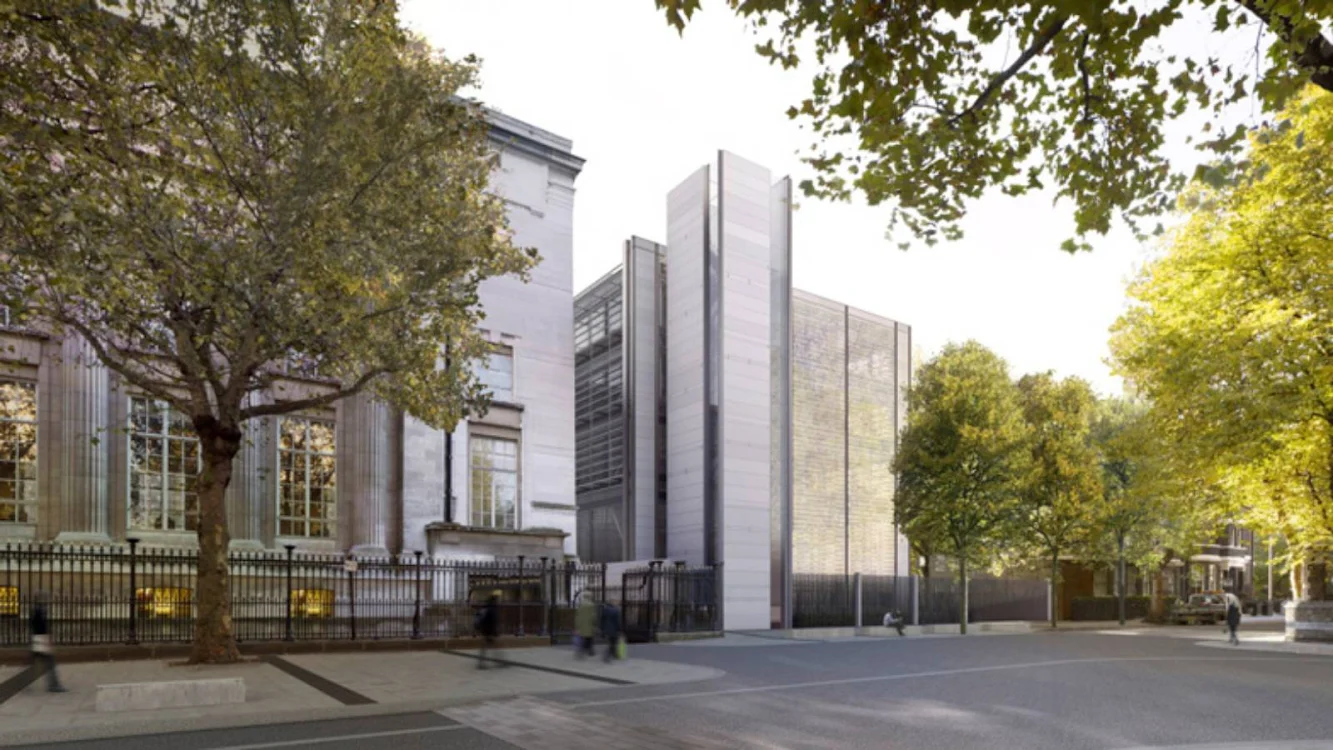
The challenge was to produce a design that both expresses the contemporary role and world-class standing of the British Museum and also responds to the wider institutional and architectural legacy of this Grade I listed building. the result is a series of four linked pavilions – each of five storeys above basement level – connecting to the main Museum and designed to optimise daylight reaching the existing North Range and King Edward Vii buildings.
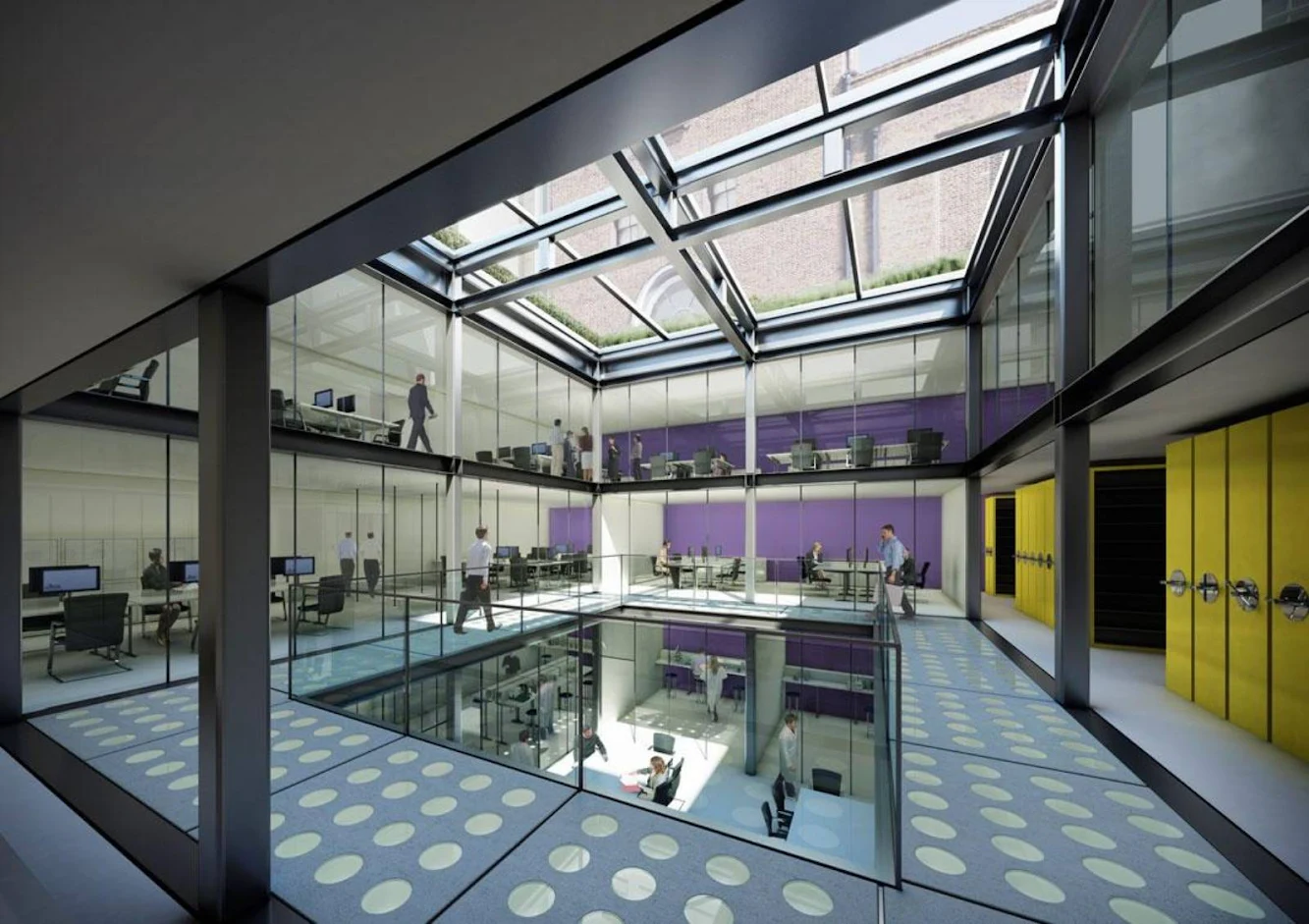
The stone and glass façades of the pavilions make a visual link to the neighbouring, imposing King Edward Vii building through both the structural rhythm and the horizontal coursing of the cast glasswhile the mass and height of the pavilions provide a sympathetic transition to the domestic scale of the predominantly 18th century properties in the neighbouring streets. A fifth pavilion – containing scientific research facilities – is submerged below ground.

Each building will include three levels of below ground storage, except in the case of the submerged pavilion where all levels are underground. the design distances the new building from the listed façades with minimal interventions in the existing fabric, while creating a solid visual aesthetic that complements the King Edward Vii Building.

The team worked to apply an order to the otherwise disparate and complex nature of the site and surrounding context,; the linked pavilions are consistent in height with the North Range and one storey lower than the King Edward Vii building. Materials have been chosen to echo those of the existing building.

The new facilities will improve existing conditions for the Museum’s staff and collection as well as allowing an increase in gallery circulation and permeability across the entire site. the functional requirements of the brief are arranged vertically across the pavilions.

The Collections Storage Facility has been located below ground where the heavy floor loading can easily be accommodated and where the most stable environmental conditions can be found. Above this sits the new logistics hub on Level 0, linking into the logistics routes of the existing Museum. the Special Exhibitions Gallery has been located at Level 2 (main gallery level in the Museum) in order to allow the best connectivity for the public and to enhance visitor experience.

The conservation studios sit above the gallery in order to provide good quality daylight for conservation work as well as placing the requirement for flues, fume extraction and ventilation at the top of the building. to encourage biodiversity in Blooomsbury the proposals aim to include a green roof across all four pavilions which will also include nesting boxes for swifts and two beehives.
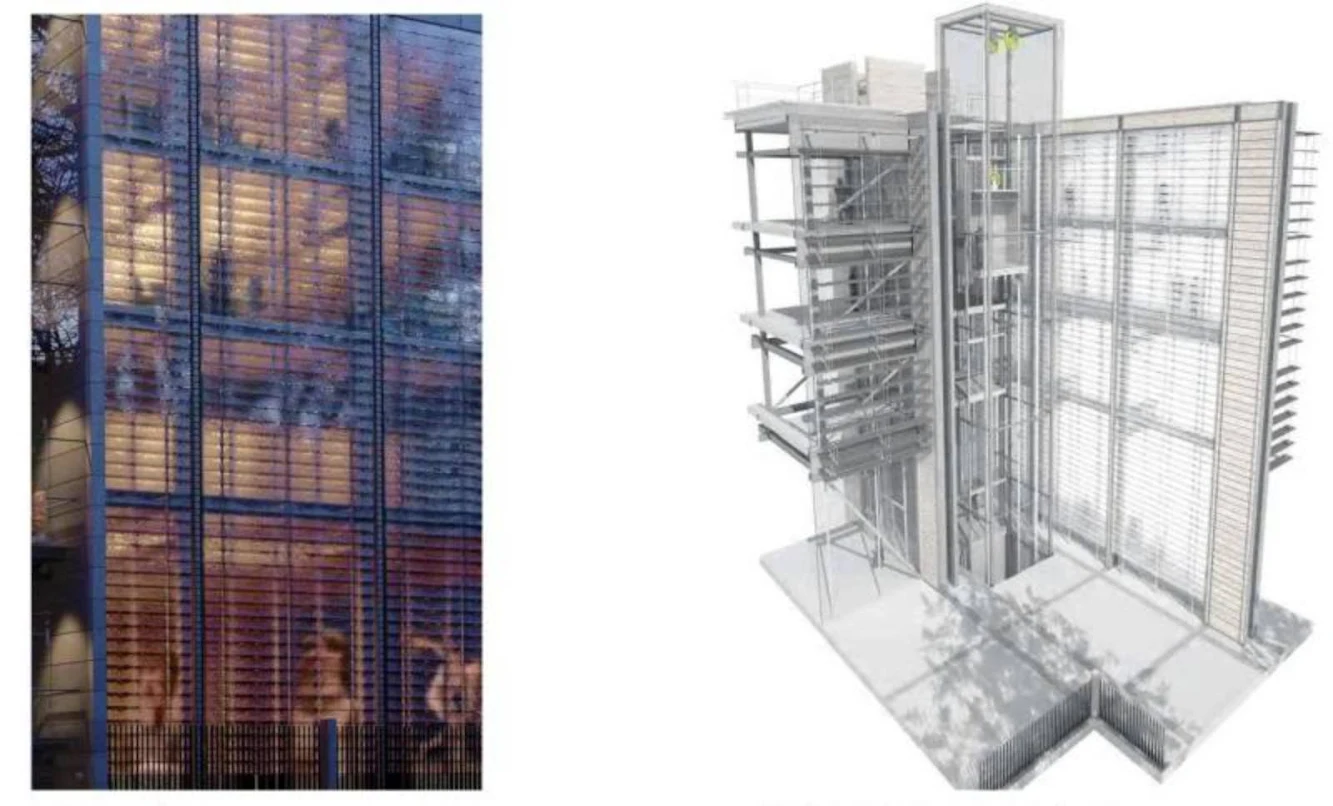
The scheme is arranged in two main elements, based upon the idea that a building consists of primary ‘served’ spaces (eg offices, conservation studios, laboratories, galleries, etc) and corresponding secondary ‘servant’ spaces (eg vertical circulation, mechanical and electrical services distribution, access to the pavilion, etc). Each pavilion is served by an adjacent services and circulation core. This principle allows maximum flexibility of space within the pavilions and an efficient use of the cores, generating a clear logic of movement and use.

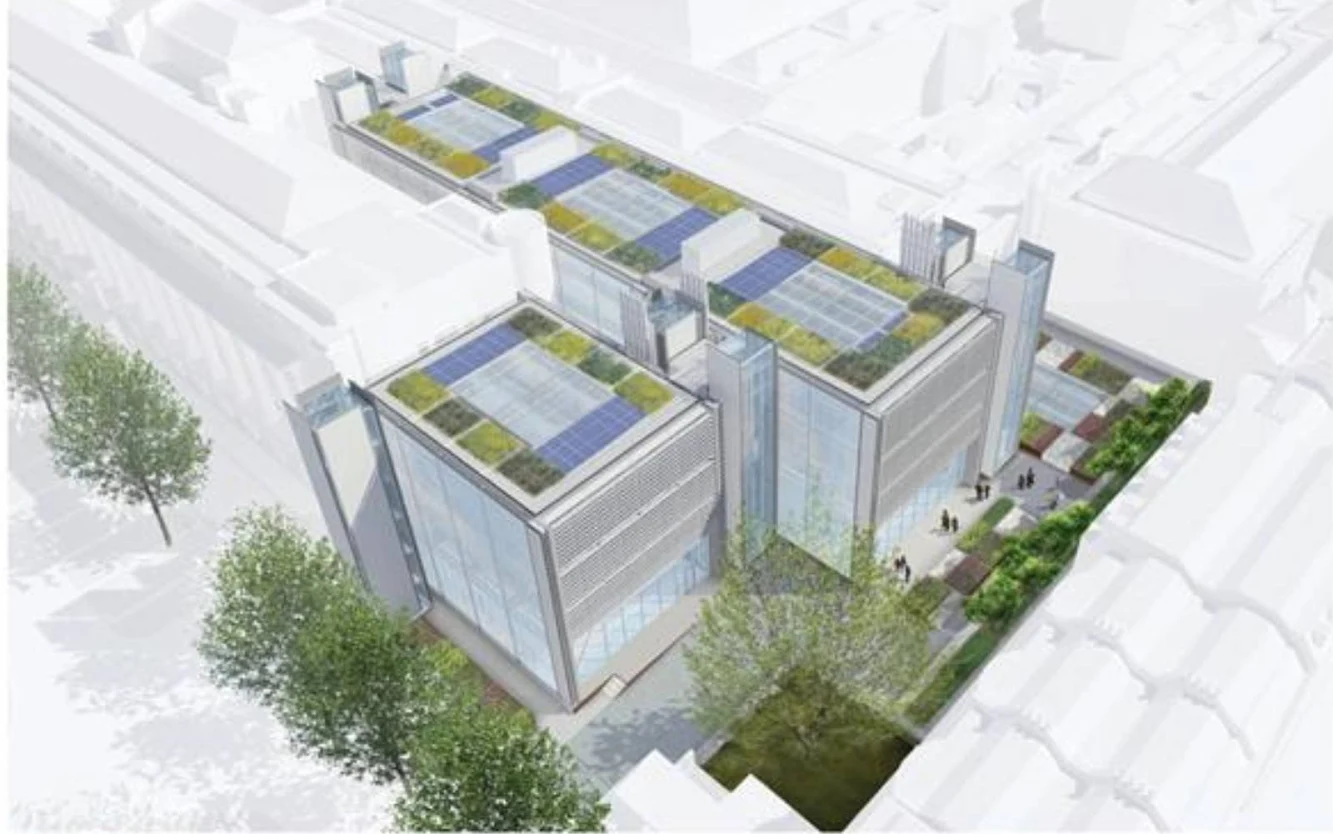


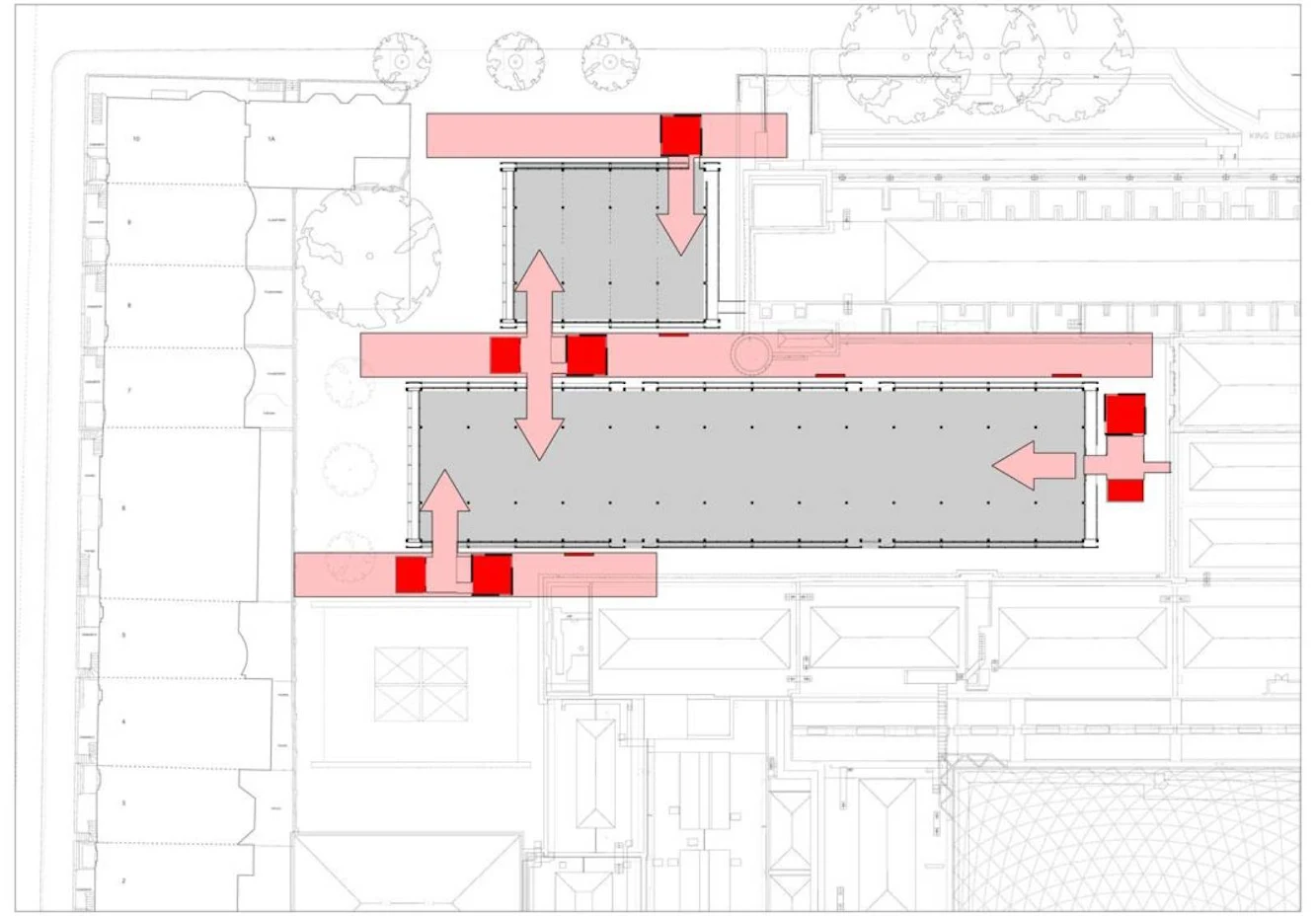

Location: London, England Architect: Rogers Stirk Harbour + Partners Project Team: Javier Ampuero, Tadashi Arai, Anna Au, Andy Bryce, Jo-anne Cowen, Lorna Edwards, Kevin Gray, Jesse Hindle, Dewi Jones, Carmel Lewin, Emily Lewith, John McElgunn, Tim Mason, Nic Mitchell, Douglas Paul, Joanna Pencakowski, Aleksandrina Rizova, Richard Rogers, Graham Stirk, James Stopps, Susi Wellings, Emma White, Chris Wilkinson Structural Engineer: Ramboll Service Engineer: Arup Planning Consultant: Montagu Evans Strategic Planning and Consultation Strategy: the Green Brain Townscape Consultant: Francis Golding Project Manager: Aecom Quantity Surveyor: Davis Langdon Landscape Design: Gillespies Construction Manager: Mace Area: 18,000m2 Cost: £ 135 milion Open: 2014 Client: the British Museum